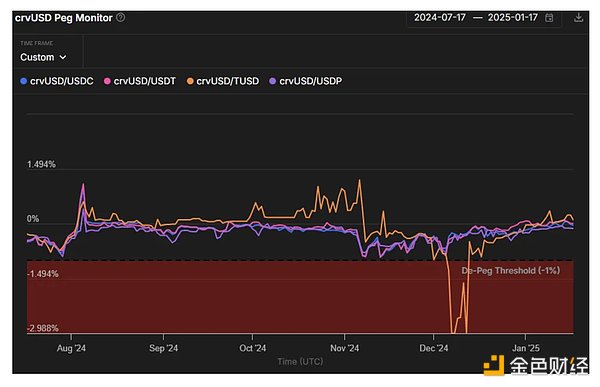
Author: intotheblock Source: medium Translation: Shan Oppa, Golden Finance
In this article, we break down The most important economic risks to consider when using DeFi lending protocols in combination with common yield strategy scenarios.
Scenario - Regulated LendingLet's illustrate these risks using a regulated lending strategy. In this case, users can deposit stable, low-yielding assets such as Bitcoin and borrow Ethereum, which can then be deployed in other yield-generating activities, such as providing liquidity in an automated market maker (AMM) sex.
Types of Risks in DeFi Protocols Liquidation RiskIn DeFi lending, there is always liquidation risk — if the value of your collateral falls too much relative to your debt, This will happen. Reaching a liquidation threshold without repaying or replenishing collateral may result in significant losses due to partial or full liquidation, which may occur automatically at any time.
Available Liquidity RiskWhen you deposit funds into the lending market, you will face the risk of the market liquidity being completely lent out. This situation may prevent you from withdrawing funds to repay the loan, effectively locking your liquidity within the protocol. Paying close attention to key deposit and liquidity trends can help assess risk levels.
Slippage riskSlippage risk refers to the loss in decentralized finance (DeFi) transactions or transactions due to the difference between the expected price and the actual execution price. financial risk. This risk is often associated with liquidity issues in the trading environment, where insufficient market depth may result in greater than expected price movements when trades are executed. Slippage can significantly impact the costs and outcomes of transactions, highlighting the importance of liquidity management in DeFi platforms.
Recall riskRecall risk is related to the difficulty of retrieving borrowed assets. Moving assets across chains or locking them in another protocol may hinder your ability to retrieve them to repay your loan, thereby increasing your liquidation risk.
Risk PreventionDecoupling risk refers to the situation where the value of assets in the AMM pool deviates from its expected value relative to other assets, currencies or commodities. Such changes could result in a loss of capital and complicate the repayment of borrowed money.
Fund pool allocation riskFund pool distribution risk refers to the financial risk caused by rapid changes in the asset composition of the automated market maker (AMM) capital pool. This risk arises when the proportions of different assets in a pool change significantly, affecting the conditions for entering and exiting the pool, especially when the trade involves only one side of the currency pair. Changes in asset distribution may result in imbalances that may lead to asset decoupling or increased slippage costs. These dynamics can impact the predictability and stability of capital pools, complicating investment and exit strategies. Concentration riskConcentration risk refers to the financial vulnerability that arises when one or a few entities control a majority of the assets in an automated market maker (AMM) pool. This concentration could result in increased slippage or liquidity risk if these major players decide to suddenly withdraw their assets. Such withdrawals may significantly alter the liquidity dynamics of the pool, impact other participants' ability to effectively execute trades, and may result in financial losses.
Conclusion: Use professional tools to deal with risksFor anyone involved in DeFi, understand and managing these risks are critical, many of which become more complex as capital increases.












